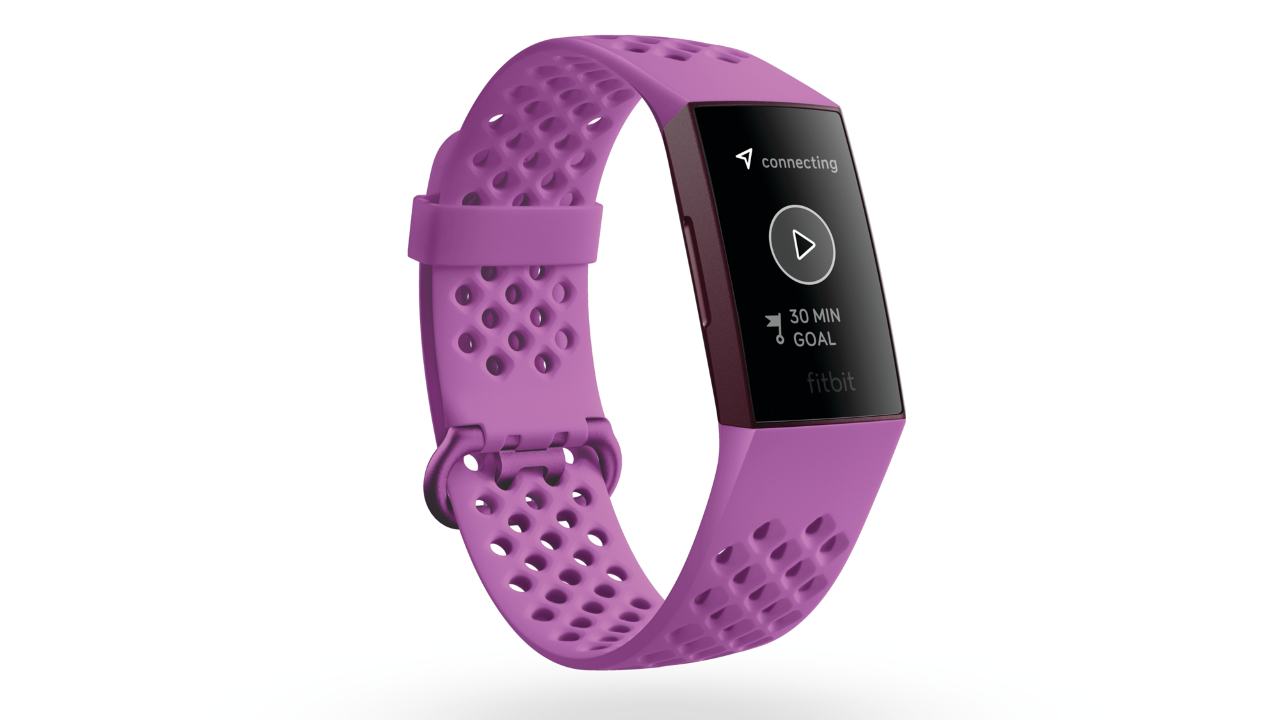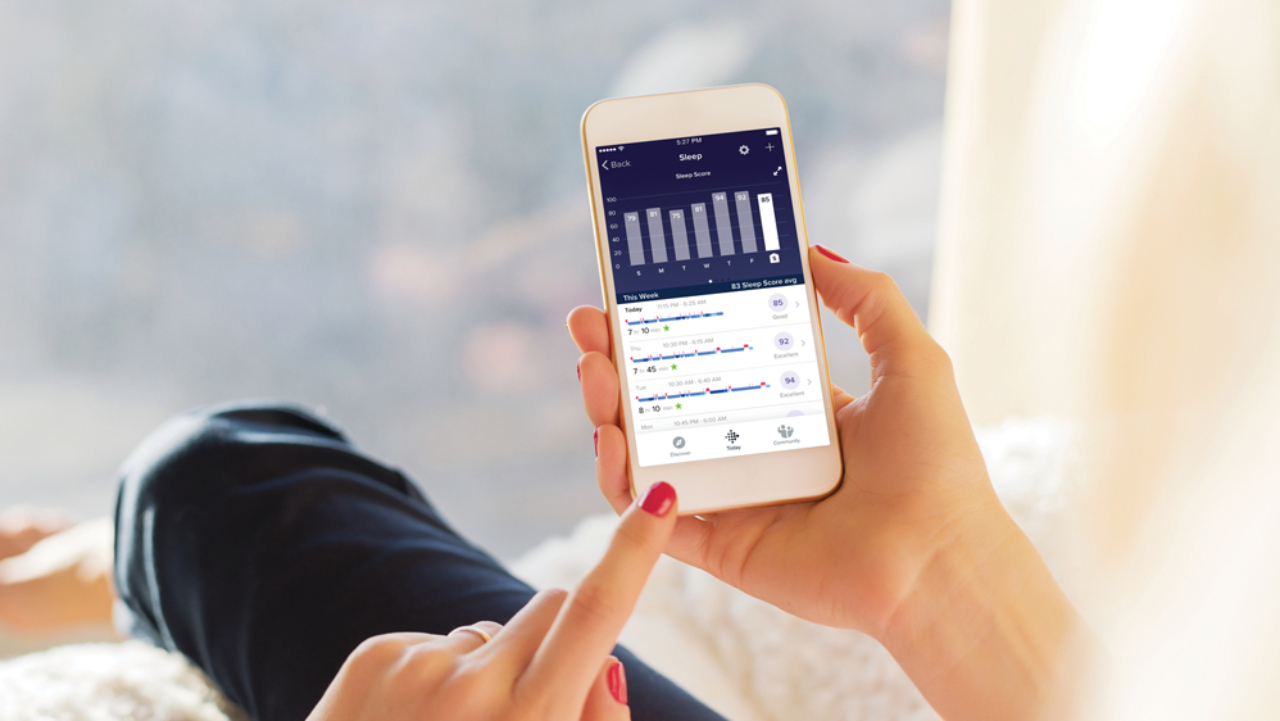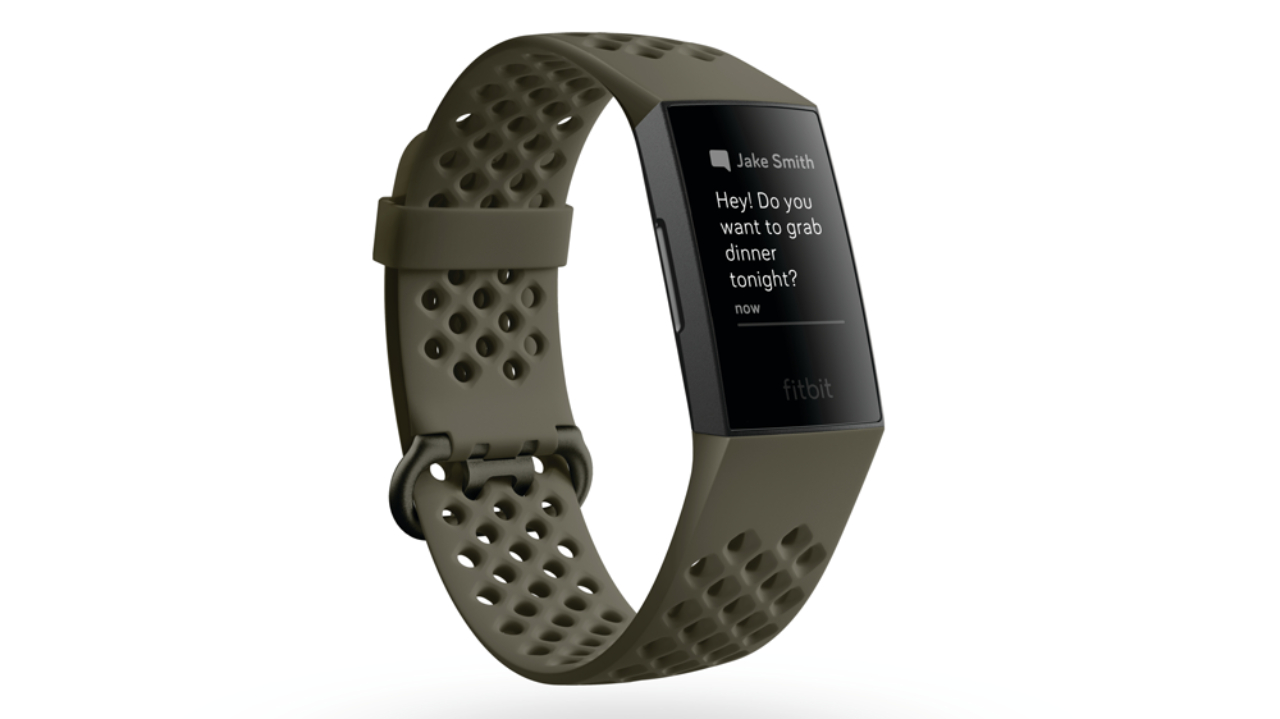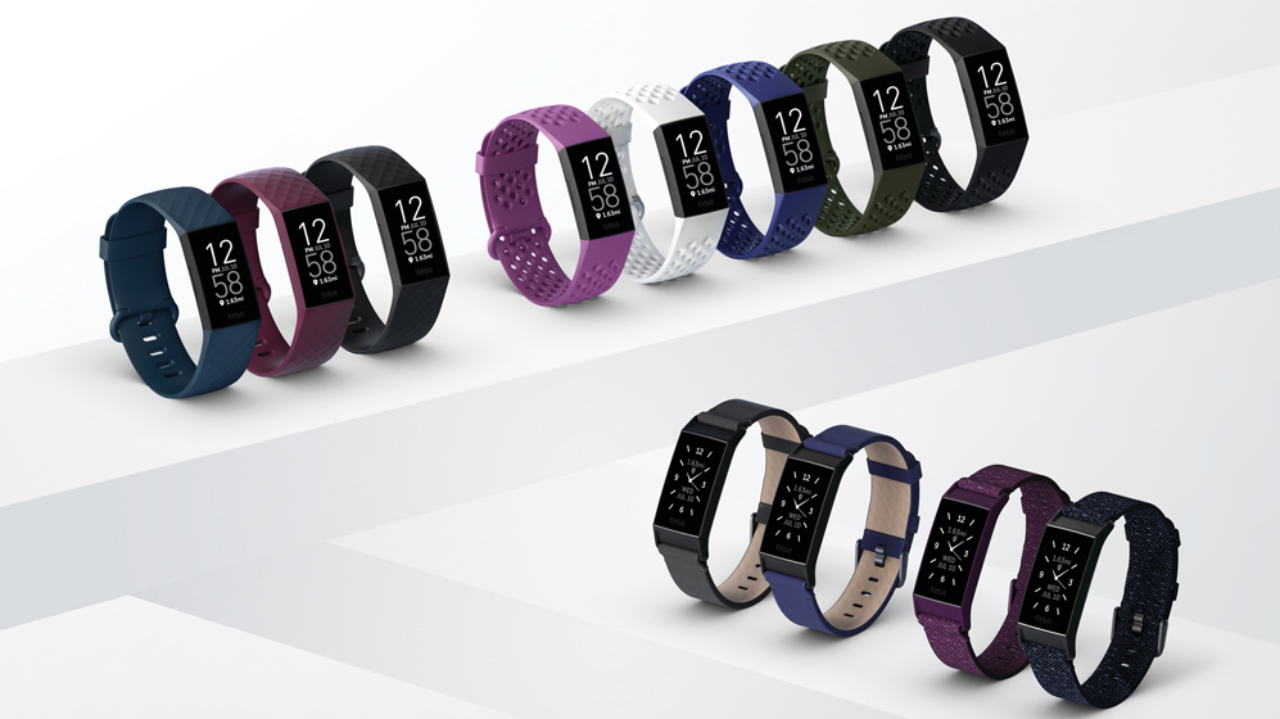Our Verdict
Fitbit’s best-selling model now has built-in GPS, a significant improvement to an already great device. While it has a few flaws, they don’t mar the overall experience as they do on Fitbit’s more expensive smartwatches. If you’re after a band to help you be more active, you can’t do better.
For
- Built-in GPS, combined with the Run Detect feature
- Active Zone Minutes far superior to 10,000 steps as activity goal
- Three-month trial of Fitbit Premium
Against
- Outdated screen
- Limited control of music on your smartphone
You can trust Coach
Fitbit Charge 4 In-Depth
Using The Fitbit Charge 4 To Track Activity
The Active Zone Minutes feature debuted on the Charge 4 (and has now been rolled out across the current line-up) and supplies stiff competition to 10,000 steps as the everyday activity goal to pay attention to. The feature asks you to raise your heart rate for 22 minutes a day, which adds up to the globally recognised, NHS-approved recommendation to be active for 150 minutes over the week. And in accordance with this widely recognised goal, every minute of vigorous activity like running counts twice towards the tally – Fitbit works this all out for you, like the best fitness trackers do. The Charge 4 works out your personalised heart rate zones, based on your resting heart rate and age, to calculate what counts as activity and vigorous activity.
Fitbit isn’t the only brand to integrate the 150 minutes’ activity guidelines into its devices, but it’s made it a more engaging target to aim for. For one, breaking the weekly target down into a daily 22-minute one has the effect, at least for me, of making it feel more achievable. The feature is also put front and centre: the Charge 4 buzzes and presents a message when you cross the threshold into a different heart rate zone, whether that’s during an activity you’re tracking or you just legged it to catch the bus.
Of course, all this depends on the accuracy of the heart rate monitor (HRM), but everything looks rosy on that front. At the beginning of the first test run the HRM locked on to my cadence rather than my pulse for five or so minutes, putting me in the peak heart rate zone for what was an easy run, but it soon settled to be in line with the heart rate recorded by the GPS multisport watch on my other wrist. After a firmware update, the Charge 4 was bang on during the second run, mostly within one to two beats of the reading on the more expensive device, occasionally straying into three beats’ difference. That’s a solid showing against a device that costs five to six times as much. The Charge 4’s HRM also automatically clocked when I was playing tag with my child and logged a batch of active minutes.
The Charge 4 includes two other features that exist on any Fitbit device with a heart rate monitor: resting heart rate and cardio fitness score. Both are good measures of your general fitness, but Fitbit does the cardio fitness score (an estimate of your VO2 max) really well, placing your score in the context of your cohort and suggesting ways to improve it.
The Charge 4 still logs your steps and tracks your progress towards a target of 10,000 steps. It also provides challenges to help you hit that goal regularly. There’s nothing really new here, but that’s OK. Fitbit does it as well as anyone else. The Charge 4 will also turn your steps into a distance travelled figure, estimate your calorie burn and track how many flights of stairs you have ascended.
Put it all together and you have an everyday tracking offering that is unsurpassed.
Fitbit Premium
One problem people experience when buying a fitness band to improve their health and fitness is finding an activity to do for the band to track. Fitbit Premium is, in part, a way to address this. It includes a wide and growing range of workouts, as well as more structured exercise plans and programmes to coach you towards, for instance, reducing your salt intake or improving your sleep.
The workouts and training plans are accessible for beginners – the running plans especially are done at a target pace most people will find eminently achievable. The coached programmes are simply advice articles drip-fed over a few weeks, along with reminders to do certain things. It’s well executed and useful, but it is ultimately a paid-for service.
Not to begin with, though. At the moment, a three-month trial is available to everyone, even those who don’t own a Fitbit, if you’d like to check it out before purchasing. The Inspire 2 is bundled with a year’s free subscription and the Sense smartwatch six months, so it’s a little disappointing Charge 4 owners only get the standard three months, but it’s a useful, initially-free service which will help get you started with a more active lifestyle. Unless you really find it compelling, we’d skip the £7.99 monthly fee once the trial runs out and consider other apps and services. We’re fans of Fiit.
Using The Fitbit Charge 4 To Track Running

Avid runners will probably give the Charge 4 the side-eye, but it suits anyone who is just starting out, runs occasionally as a part of staying active, or signs up for a running event on a whim.
With the addition of built-in GPS the Charge 4 becomes a much better device to track running. While previous Charges and most other Fitbits could connect to your phone’s GPS, the tracking – on a Fitbit or other brands who use connected GPS – often fails to match built-in GPS for accuracy. I also know of a few people who skip the extra steps needed to establish a live connection between the device and phone, tracking runs using steps instead. I suspect that’s pretty widespread behaviour, and a shame considering those people are missing out on the more accurate distance and pace stats they’re paying for.
Built-in GPS also brings Fitbit into step with other major brands. I can’t think of a launch in the last 12 months – other than Fitbit’s – that didn’t have built-in GPS, including the £60 Honor Band 4.

Fitbit uses the American GPS satellite system (more expensive devices have the option to also use alternative Russian, European Union or Chinese systems), and I found discrepancies when I compared it with a top-of-the-line multisport GPS watch I was also using. The Charge 4 seemed to be reliably overclocking the distance covered, with a 0.1km discrepancy on a 4.35km run, a 0.42km difference on a 9.18km run, and 0.3km on a 7.5km session. It’s a little concerning, but it is also manifestly unfair to compare the Charge 4 with a watch more than four times its price, and those three runs hardly constitute a rigorous, scientific test.
One key consideration with all GPS devices how quickly using it drains the battery. Fitbit quotes five hours of GPS and my experience bore that out, with one 50-minute run draining the battery from 59% to 38%. That’s a decent showing, and means that the Charge 4 would see a lot of people through what’s likely to be the biggest challenge of their running career – a marathon.
The other important part of built-in GPS is how fast the device can find a signal, because if you make people wait too long they’ll give up and set off regardless. When I waited for a signal it took somewhere between 20 and 30 seconds, a solid performance from a sub-£150 device in my book, but it did even better when I didn’t bother waiting and relied on the Run Detect feature instead. This seemed to catch a signal on the move and automatically start recording a run within that time frame, sometimes sooner. Once, out of four times, I relied on Run Detect and the feature didn’t kick in, although the run was recognised and logged – I just didn’t get a route map and pace and distance stats afterwards.
To my mind, this is the killer feature that will suit the type of everyday exerciser who isn’t invested enough in the accuracy of the stats to wait before setting off. It’s the ultimate convenience, requiring nothing from the person wearing the device and giving them a heap of better information in return.
GPS and Run Detect are two features that the watch allows you to toggle on and off. There’s also Auto Pause, which can be useful if you run in a busy city and want the watch to pause while you wait at traffic lights, and Heart Rate Zone Alerts which notifies you when you enter Fitbit’s Fat Burn zone, or cross from the Fat Burn zone to Cardio, or Cardio to Peak. Before you start searching for a GPS signal you can also set a distance, time or calorie goal, or one for Active Zone Minutes. On the phone you can set automatic laps, so the device will notify you of your progress after a set distance, time or amount of calories burned.
One of the biggest let-downs is the Charge 4’s screen, which was hard to read in bright midday sunlight. It’s lovely and bright in the morning and early evening, but if you find yourself regularly running around lunchtime that’s something to bear in mind.
During the run, tapping the screen cycles you through pace, average pace, heart rate (which has an icon to denote the zone you’re in), calories, steps, time of day, distance, time elapsed, distance travelled in the current lap (if automatic laps are set to on), and Active Zone Minutes achieved. Distance and time elapsed are permanent fixtures in a smaller text size at the top and bottom of the screen, respectively.
There’s also an intervals mode which includes GPS tracking so you can set simple work and rest periods, and repeat them a set number of times. However, the lack of average pace stat on the watch is a glaring omission and suggests it was designed for gym-goers rather than runners.
In the app, the data’s laid out in an easy-to-read way, with a map of your route and an overlay of your heart rate zone or pace, splits, elevation, heart rate and calories burned. And most importantly, it’ll export to social activity app Strava easily.
Using The Charge 4 For Tracking Exercise
There are 21 exercise modes to choose from, with the ability to load six on to the watch at a time. The difference between each indoor or outdoor type will be minimal, but it will help you to log your exercise history more precisely. Usefully there’s an interval workout mode where you can set work and rest periods, and how many rounds to repeat that pattern for, in the app then transfer it to the device to follow. If you like to follow time-based workouts from the internet then it’s a great help.
The Charge 4 is also waterproof enough for pool swimming and can count lengths, although it won’t stretch to stroke recognition like Fitbit’s smartwatches. You have to set the length of the pool in metres or yards, 10 being the minimum. In the pool all you get on the device is a timer, with the lengths counted and estimate of the calories you burned available afterwards in the app.
The Charge 4 also has Fitbit’s excellent automatic exercise tracking which I mostly use to track bike rides. I ride to get around, rather than as “exercise”, so can’t be bothered to wait for GPS to connect or even to interact with the watch. The Charge 4 has never failed to recognise a bike ride, with no input from me.
Using The Fitbit Charge 4 For Sleep Tracking

Sleep tracking is one of Fitbit’s strongest suits and the Charge 4 executes it as well as any other device in the lineup. You get an overall Sleep Score out of 100 for an at-a-glance rating, as well as a breakdown of how this worked out. There’s an awful lot of information to digest but it’s easy to navigate, it’s concisely explained and it gives you tips to help you improve. The advice isn’t groundbreaking, but it’s got a reasonable chance of being effective.
The Charge 4 includes a SpO2 sensor, which informs the Restoration portion of your overall Sleep Score. SpO2 sensors are appearing on more devices than ever before, but to me the usefulness is questionable. Here I think Fitbit is using it judiciously.
The Charge 4 can also use its ability to track which stage of sleep you’re in to wake you at an optimum time. When setting an alarm on the device, swipe up to turn Smart Wake on. Once you’ve set the time, the device will rouse you once you hit a period of light sleep in a 30-minute period before the alarm. The idea is that you won’t be woken from a period of deep sleep, leaving you drowsy.
Using The Smart Features On The Fitbit Charge 4
Across its range of devices Fitbit’s smart features are a bit of a let-down, especially when it comes to the most recent smartwatches, but for a fitness band the Charge 4 does a decent job.
The stand-out feature is the inclusion of Fitbit Pay as standard (previously it was only available on the Special Edition of the Charge 3). Fitbit Pay still doesn’t work with any major high street bank except Santander, but there are eight challenger banks which will work with it.

The other major addition is a Spotify app, but despite being talked up in the pre-release hype, it’s a flop. Essentially it’s a souped-up remote for a premium Spotify account, allowing you to control the app on different devices and navigate through playlists, although it doesn’t allow you to store and stream playlists offline.
What really grates is that on older Fitbits there used to be generic music controls that could perform the basic play-pause-skip-volume functions better than whatever headphones you were wearing. That’s gone and been replaced by something that has marginally better functions, but can only be used with one streaming service and you have to pay for the privilege of performing tasks your headphones can do. As you can tell, this really sticks in my craw, but in the context of fitness bands – which you don’t really expect to do much music-wise – I can tolerate it. It’s a different matter when it comes to Fitbit’s smartwatches.

Getting notifications is subject to the same quirk as on all Fitbits. I use an iPhone and while notifications from Apple’s apps – calls, texts, calendar – are automatically relayed, to get anything else beamed to the watch, it must first have issued a notification on your phone after you’ve installed the Fitbit app. You’ll then have to go into the Fitbit app and turn on notifications from apps like WhatsApp, news apps, and even Fitbit’s own app.
If you use an Android phone you can set up a series of quick replies to texts that can be triggered from the device.
The Design Of The Fitbit Charge 4

The Charge 4 is a stylish band, but if there’s one area in which it falls down against the competition it’s the greyscale screen. You’ll find more vibrant colour screens on £50 bands from the likes of Huawei and Honor. Otherwise the screen reliably wakes up when you turn your wrist and the touchscreen registers swipes accurately. These may sound like basic things to get right but many bands don’t – even smartwatches can fall at this hurdle.
The recessed button on the left-hand side of the device is also usable – much more so than on Fitbit’s Versa 3 and Sense smartwatches, where it has frustrated us no end. Perhaps it’s because the Charge 4 is narrower so easier to pinch.
True to form, Fitbit offers a bevy of different straps which are easy to swap in and out. Currently there are textured woven bands (£29.99, currently reduced to £22.99), sumptuous Horween leather bands (£59.99, currently reduced to £44.99) and upgraded sports bands (£24.99, currently reduced to £18.99). In the world of fitness bands, Fitbit offers a more stylish range of options than any other brand. It’s only when you get to smartwatches that you find real competition in this area.
Battery Life On The Fitbit Charge 4
The battery has always been one of Fitbit’s strong suits and I’d wager protecting that reputation is one of the reasons built-in GPS was passed over time and again. The Charge 4 has a quoted seven-day battery life, but when running for between 30 minutes and an hour every other day, I got between four and five days out of a full charge. When avoiding running, that stretched to six or seven.
The Charge 4 takes about an hour and a half to go from empty to full, and while it’s not the worst I’ve seen, the charger leaves something to be desired. The clip makes it secure, but there’s no click or other indication that you’ve lined up the connectors correctly, so it’s worth double-checking the device is actually charging, unless you want to risk returning after an hour to find a still-dead device.
Should You Buy Something Else?
The Charge line is historically priced at £129.99 when launched and normally dips under three figures after 18 months to two years. However, a little over six months after its release the Charge 4 dropped to £99.99 for Black Friday and that discount has persisted. For such a new device that price represents cracking value.
On paper, the latest Huawei, Honor, Xiaomi or Amazfit bands match up well to the Charge 4 and seriously undercut it, but while they’re all capable devices, they don’t offer as slick an experience as the Charge 4. If you feel like you need more guidance to improve your fitness, the Charge 4 is worth the extra money.
The Huawei Watch GT 2e is also regularly found at the reduced price of £99.99. It has a flashy colour touchscreen, storage for music (although not if synced with Apple smartphones) and far superior sports tracking, especially when it comes to running. But it lacks the convenience and automation of the Charge 4.
The Polar Unite is a better choice if you already spend a decent amount of time exercising and want to build on that. The sleep tracking matches the Charge 4’s and the Unite uniquely spins that information into three personalised workout recommendations for that day. The Unite does lack built-in GPS, though (you’ll find that on its more expensive stablemate, the Ignite) and while its RRP is similar to the Charge 4’s, It hasn’t experienced the continuing price cut.
There’s also a case to be made for the slimmer Fitbit Inspire 2, especially because of the year’s complimentary subscription of Fitbit Premium, but now that the price difference is essentially £10, we’d go for the larger screen of the Charge 4.

Jonathan Shannon was the editor of the Coach website from 2016 to 2024, developing a wide-ranging experience of health and fitness. Jonathan took up running while editing Coach and used the training plans on the site to run a sub-40min 10K, 1hr 28min half marathon and 3hr 6min marathon. He’s an advocate of cycling to work and is Coach’s e-bike reviewer, and not just because he lives up a bit of a hill. He also reviews fitness trackers and other workout gear.

